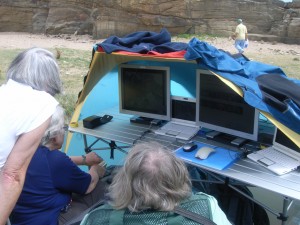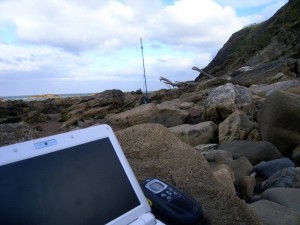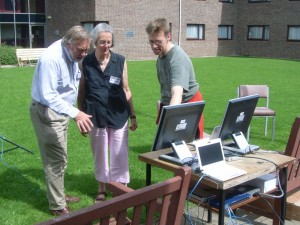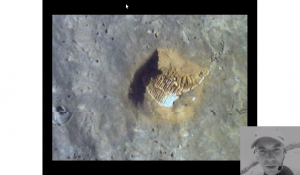
Tutor and students at the ERA base location viewing the video feed and communicating via VoIP with the field geologist. Howick, Friday 07 August 2009
The curse of ERA – bringing sunny weather to field trips – strikes again! Despite packing gaiters, gortex, and waterproof sample bags to protect our kit, it was the sunshine rather than the rain that was the challenging weather for the Durham area field trips.
Jokes aside, we’ve had great weather, mainly sunny with the occasional light smattering of rain. This is actually a significant factor for us when we’re working in the field. The radio signal isn’t affected by rain to any great degree, we’re fairly confident that students will dive for cover before the radio signal deteriorates too far in rainy conditions, but we have to watch out for sun and rain when it comes to using the equipment in the field.
We’re aiming to use off-the-shelf, consumer equipment as much as possible so as to come up with a solution that could be taken up by the greatest number of other educational institutions. There is heavily ruggedised military-specification equipment for most of what we’re doing but the cost and weight factors puts this out of our league and probably would make the ERA system much less likely to be adopted by a broad community of users. Continue reading →



